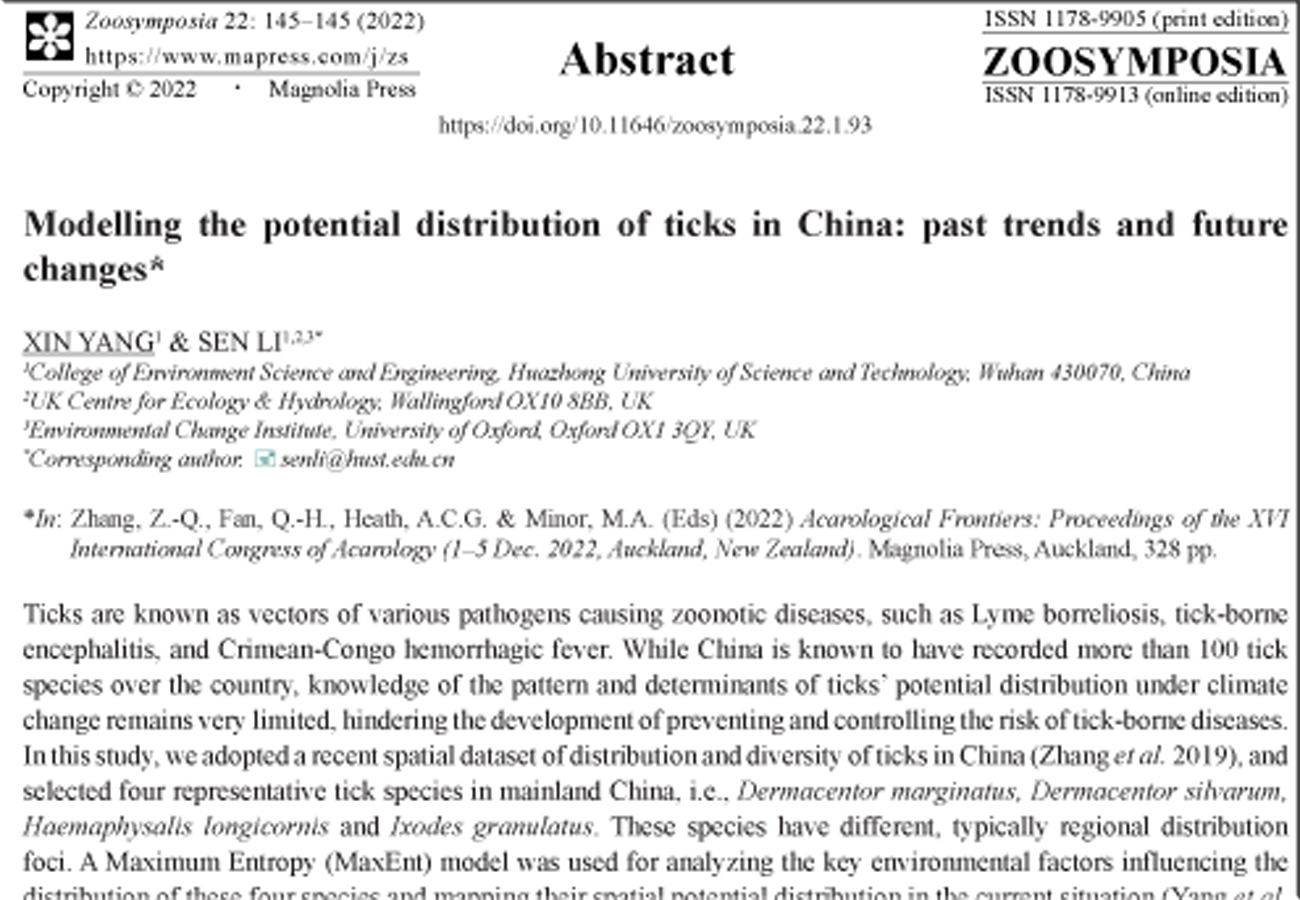Abstract
Ticks are known as vectors of various pathogens causing zoonotic diseases, such as Lyme borreliosis, tick-borne encephalitis, and Crimean-Congo hemorrhagic fever. While China is known to have recorded more than 100 tick species over the country, knowledge of the pattern and determinants of ticks’ potential distribution under climate change remains very limited, hindering the development of preventing and controlling the risk of tick-borne diseases.
References
Zhang, G., Zheng, D., Tian, Y. & Li, S. (2019) A dataset of distribution and diversity of ticks in China. Scientific Data, 6, 105. https://doi.org/10.1038/s41597-019-0115-5
Yang, X., Gao, Z., Zhou, T., Zhang, J., Wang, L., Xiao, L., Wu, H. & Li, S. (2020) Mapping the potential distribution of major tick species in China. International Journal of Environmental Research and Public Health, 17, 5145. https://doi.org/10.3390%2Fijerph17145145
Yang, X., Gao, Z., Wang, L., Xiao, L., Dong, N., Wu, H. & Li. S. (2021) Projecting the potential distribution of ticks in China under climate and land use change. International Journal for Parasitology, 51, 749–759. https://doi.org/10.1016/j.ijpara.2021.01.004

